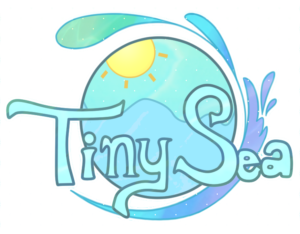LEARNERS
Welcome to TinySea, an imaginary ocean facing real climate change. Your job is to create a sustainable, self-sufficient ocean ecosystem here. Start small and grow your aquatic resources, and watch out for changes and challenges ahead…
01 Introduction
You’ve received a grant for 500 points to start, and then 100 points per day afterwards. First, you do some tests and find the water temperature. You are shown a selection of 9 creatures to start with, three for colder waters, three for temperature waters and three for tropical waters. But be careful of which creatures you choose!
If the creatures aren’t a good fit with the environment, the creatures will quickly meet their demise and you won’t get your money back. Think about how to choose animals for resilience or spawn rate; some animals are more resilient to temperature than others, with the tradeoff that they spawn less or slower. Keep track of which creatures survive and which creatures grow in population, and you’ll quickly have a lot of creatures to manage.


02 Selling Creatures
If you raise a healthy population of herbivorous creatures, you can sell some and purchase more expensive carnivorous ones.
But what about these creature’s appetites? Carnivorous creatures need food in the form of the smaller, herbivorous creatures. Now suddenly, some of your herbivorous creatures are eaten every day. If you want your population of carnivorous creatures to grow, you’ll need to maintain a healthy population of herbivorous creatures too!
Remember to keep track of the changing temperature: if the water is too warm, your whole ecosystem can collapse.
03 Buying Apex Predators
When you have your population of herbivorous and carnivorous creatures under control, you’ll be able to purchase the apex predators. These creatures require both a stable population of herbivorous and carnivorous creatures to eat but bring in the most money to sell.
But notice the changing climate: cold-resistant species suddenly die, and you’ll have to quickly adapt to the changing environment.

Let’s Play
This game puts players in charge of building a managed marine ecosystem. Players add different creatures during their turn, sell as many creatures as they want and manage the populations in a system with an ever-changing temperature. Students will get an introduction to the complex world of marine ecosystems and aquatic food-webs and the effect a changing climate has on them.
